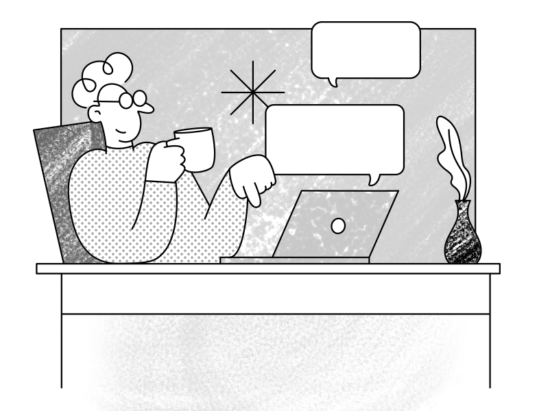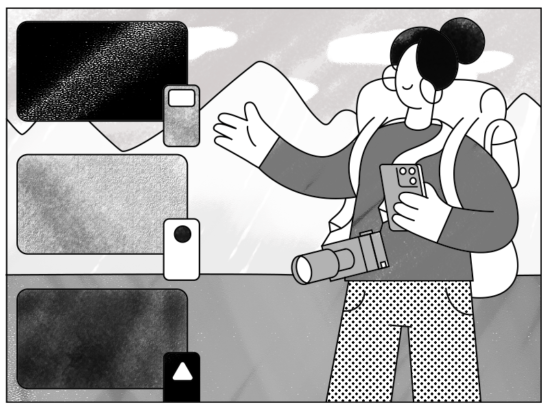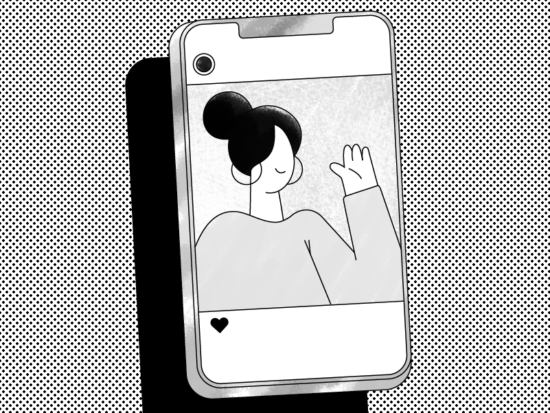Tip #1 a tshirt goes a long way
When it comes to DIY cheap marketing, not many things can stand shoulder to shoulder with the humble old t-shirt. Start-up marketing budgets are notoriously tight. That’s why savvy online business owners focus on finding ways of spreading the buzz about the company around without actually paying (much) for it – and you’ll be hard pressed to find a marketing channel with better ROI then the t-shirt.
T-shirts are great as gifts and freebies, but their main use should be as your (un)official company uniform. Think of yourself as a walking ad for your business – you probably cherish any opportunity to talk about it and you have your elevator pitch ready. All you need is a topic starter, and a t-shirt with your company logo can do that for you.
Of course, you should give them away as much as possible. Consider doing this with your entire first batch, minus an obligatory one or two for every employee. After decking out your staff, give them to your friends. You could post that you are giving t-shirts away for free on all social media and watch them fly off the shelf.
Always have some with you when going on trips, be they business or private, hand them out to people in the street, donate them to shelters, do whatever you can so that those t-shirts get out there in the wild and your company gets noticed. Sujan Patel says that t-shirts were the first and for a while the only means of marketing he used for his content marketing company, and that wearing them has led to many a conversation and ultimately to him landing several clients, which would never happen had he not worn his company t-shirt whenever and wherever possible.
As Sujan says: “When you wear your shirts everywhere, people start to get curious. And when they get curious, they go out of their way to learn more about you and your company. In some cases, this might turn into more business. But even if it doesn’t, people who are interested in your shirts might be willing to wear some of your extras around – leading to more business down the road.”
Considering that those t-shirts represent your company and that you will be wearing them, don’t skimp on their quality. People who receive them as gifts should be happy to wear them and be able to do so many times, which in turn may result in leads and new clients months or even years from now. Also, consider the design and if necessary, employ a professional designer to liven things up a bit and make your t-shirt really stand out and be something people would like to wear.
Providing that you are following all these tips, you can expect to go through your initial batch fairly quickly. So, you should have funds allocated (it’s really not a lot, a 100 top-quality t-shirts can will set you back a couple hundred dollars) so that you can quickly react when supplies dwindle. Use every such opportunity to introduce a new design or at least a new color, but always keep your company logo as the centerpiece. After all, those t-shirts primarily serve as your promotional channel, and the fact that they are practical, comfortable and nice-looking is just and added bonus for the people wearing them.
Tip #2 email is not dead
The humble, venerable email is still arguably the best marketing channel at your disposal. Emails are most likely to result in leads, and on top of that they drive traffic while supplementing your content marketing, leaving social media in the dust when it comes to the bottom line – sales.
Your welcome email, the one that the subscriber receives immediately after signing up on your website, is your second and actually more important chance at making a good first impression. Yes, the website is where people come to subscribe, so they must have already came into contact with your brand – but if your website is your storefront then the welcome email is the smiling salesclerk at the counter.
The welcome email should be sent as soon as a subscriber signs up. Don’t let them dwindle and wander off into the wilds of the interwebz, get them while they are still fresh and likely interested in what you have to offer. This will also send a strong message that you are both attentive and responsive.
The initial email should be crafted in such a way as to build trust and facilitate customer involvement though an immediate call to action. Be clear and boldly state your company name, both in the sender line and in the header of the email body itself. A brief introduction will suffice, a few words of welcome and the main message organized into few informative points. A simple subscription confirmation is largely pointless. A welcome email is your first chance to deliver value to the subscriber and turn them into a satisfied customer.
Skipping the welcome email all together and delving right into promotional emails could be considered bad manners and too forceful. It is not recommended, rather try to include some promotional consent in the welcome email, striking a balance between salience and salesmanship.
In order to get the subscriber to act, you should use the information you received from sign-up. Use their name in the greeting and if you asked for their location, include some related specifics, like shipping deals for the region. The source of the subscription can also be a great criteria for determining the exact message. First time comers probably need some incentives to purchase, so highlight deals and first-time only offers, if any. Those who subscribed on check out could be your future referrals, so make sure to thank them and offer additional value, like future discounts or promotional codes. Use the context to tailor your welcome email and have it customized so that it resonate with various types of subscribers.
Design-wise, focus on the letters and clear, readable formatting, but add your company logo and pictures if appropriate. Additionally, make sure to use the template that you will be using in every email further down the line. You are building your brand, at least in one subscriber’s eyes, so be recognizable and distinguishable.
Finally, you should not get carried away and try cramming too much into one email. Keep it simple and sweet – both in showing you will care for the customer but also in the sense of focusing on the most high-value action.
The email clearly identifies that it’s from Harvey Norman and is sent immediately after sign-up. Using the subscriber’s first name along with a thank you offer builds a relationship immediately. The email articulates the benefits of signing up and sets expectations for subscribers as to what they will be receiving. The offer is sent to the subscriber with a dynamic timer, creating a sense of urgency to drive conversion.
Tip #3 the surprise
Hey, are you doing e-commerce? Or is your business web-based, or something equally intangible? Yes, that is nothing unusual today, we are all hyper-connected and conducting our day to day business and out business in increasingly detached ways. But evolution does not catch up that quickly, and deep down we are all – well, most of us, anyway – still in need of human contact and some tangible connection to the stuff that matters to us.
Which leads us to conclude that if you want your stuff to matter to your clients and customers, it will definitely help if you give out some tangible token of your appreciation. Perhaps ironically, not that we are expected to be constantly available but less required to actually be physically present, the importance of tangibility is highlighted more than ever.
Your business will be most in touch with loyal customers, the ones which comprise the long tail many small business rely upon. You should make an effort to get to know them. After all, you have the technology to do so – their names, their birthdays, their location, when they surf the internet and an astounding amount of other data that can be gleaned from a simple sign up form/website analytics combo.
But don’t rest easy believing that is enough to retain them. Research show that people are much less loyal to brands and business with whom they have contact only through electronic means. It’s easier to leave someone you don’t know or actually see and that you don’t have any connection more meaningful than a business transaction.
That is why it is critical for online based business to extend their communication with customers beyond the web. And we are not talking about paper mail making an unexpected comeback. Having some face to face with each customer is not always possible, but loyal customers should be made to feel like friends, and given bonuses such as dedicated customer service with a video chat option (and when the owner greets you a simple “Glad to have your business” speaks volumes more than it does otherwise).
But it is even more important have some kind of a tangible gift to send out to your loyal customer. Remember the t-shirt and go beyond. Think about what sort of gift represents your company or your values and think about the customer and what would be useful for them.
When you send a gift with all that taken into account, you are forging a deeper connection and simultaneously sending a message that the customer is important to you. Especially if you make them feel truly special by letting them know that this is an exclusive thing, meant for select customers only – or if you go to through the effort of making it somehow personalized. That’s where data you’ve gathered comes into play – you can use it to really nail the whole gift-giving thing and keep your customer, making that tail longer.
Tip #4 never let them leave
If you want to run and grow a successful ecommerce business, you have to face some harsh truths, and one of the harshest is that 99% of those hard won first-time visitors have absolutely no intention of making a purchase. And there is not much you can do about that number.
This means that you should focus on getting those 1% first, and second, on making those first timers come back again. That’s all nice and well, but it doesn’t really mean that you should just ignore all those potential prospects the first time they come to browse around your online store.
The idea behind an exit intent popup (also know as an exit lightbox) is to help you catch at least some of those 99% and keep them on your website – and the nice thing is it works not only for first-time visitors but for anyone wishing to leave your site.
In a nutshell, an exit intent popup uses Javascript and your web browser to know when the visitor clicks to close the tab or change to another tab. That is a trigger for the popup to appear with a last ditch effort – an opt in for subscription or a special offer highlight.
Exit popups work because they disrupt the process of tab switching, which has become almost as natural as breathing for most web users. Additionally, they work because they present users with a strongly voiced option that calls for direct action and a single decision.
Exit popups should be activated anytime a user decides to leave your website, but the content of the popup should be customized depending on the specific context. For people leaving the shopping cart, a simple DON’T GO message paired with an incentive such as a coupon code boosts sales by as much as 10%. For users who leave after simply browsing through your store, a promotion or a contest notification is the best option.
Additionally, you should make use of targeted traffic and display customized popups for users depending on the source of their traffic –for example, a discount for Pinterest followers on a selected item.
In a nutshell, an exit lightbox with one last offer functions to generate last-minute leads. By providing the option for additional or later discounts or special deals, you might just persuade the visitor to opt in to a newsletter subscription or to give your store another go. After all, if they were interested enough to come to your site, why not give them a good reason to stay and not bounce away for good?
Tip #5 testimonials really work
Ah, the simple testimonial, a time honored advertising type, done to death in TV ads and ground to dust by telemarketers. It could be said that it is the original and most enduring form of advertising: making note of what people who love your product have to say about it, and using that in your message.
The internet hasn’t changed the fact that we still trust our friends’ recommendations the most. That is why advertisers tried to cram people talking about the merits of a product into countless TV ads and why so many direct marketing emails and product pages contain written testimonials displaying customer satisfaction.
Your copy could be stellar and your site super-responsive, even your product could be superior to the competition in every way – but the key question is whether all that is enough to persuade the site visitor to buy.
Testimonials play a key role in that. Most visitors check out product testimonials and customer reviews before making a purchase, and you need look no further than Amazon to realize that people prefer sites with product ratings and reviews.
The point here is that a customer will always be more persuasive than you. Great copywriters know this and use customer reviews to craft their copy. But you don’t need to be a copywriter to use testimonials on your ecommerce website in a compelling way. All you have to do is allow reviews of your products and then diligently sift through all of them, singling out those that strike you as most compelling – chances are that they will resonate with your visitors, too.
If you aren’t sure, some A/B testing will help you find the perfect review to highlight on your homepage or the product page. (this is a simple site optimization technique, where two versions of the same page are shown to two different users, and the clickthrough rate or some other performance indicator is measured to see which version has led to more conversions).
You should go beyond your site when looking for reviews – Facebook now has a review tab for local business, and Linkedin reviews can be a great trust-building tool, even though they are only available for individuals, because when users see that your employees or yourself come highly recommended, they will tend to believe that your product or service is also up to par. And don’t forget YouTube: the power of video reviews, coupled with unboxing videos, is only going to increase – and having a face to connect to goes a long way towards establishing trust in the reviewer.
There are other ways to get reviews for use for your products, such as Yelp or local search directories on Google. And its always good to solicit reviews of your product from specialized niche sites, where users can comment.
Finally, you can offer incentives for reviewing. Local search directories allow you to share coupons and discounts on their sites. Facebook allows you to provide special offers exclusive for your page fans. And you can provide a classic giveaway, gift or a discount to anyone who sends in a vide review. There is a lot to do and even more to gain, so start gathering those testimonials and reviews as soon as you have some satisfied customers.



